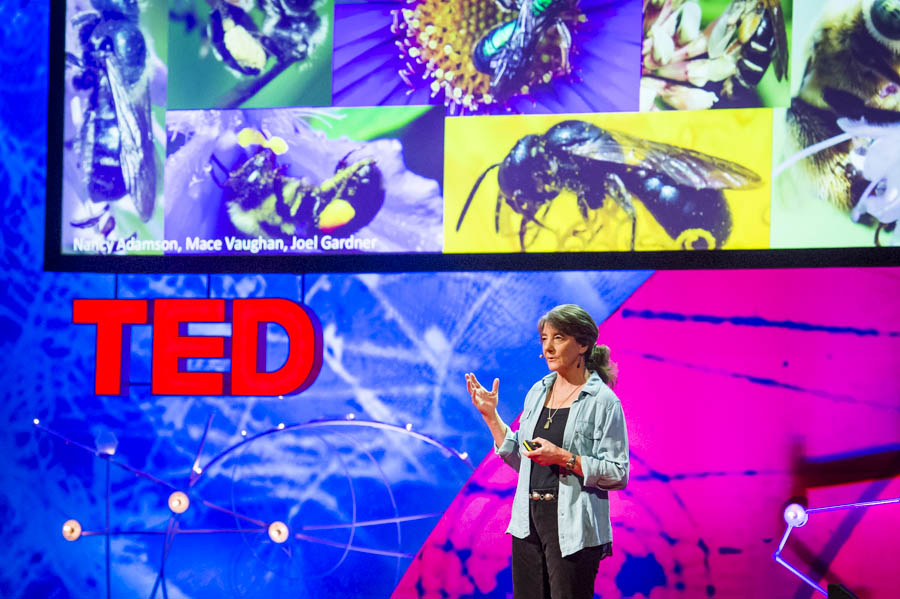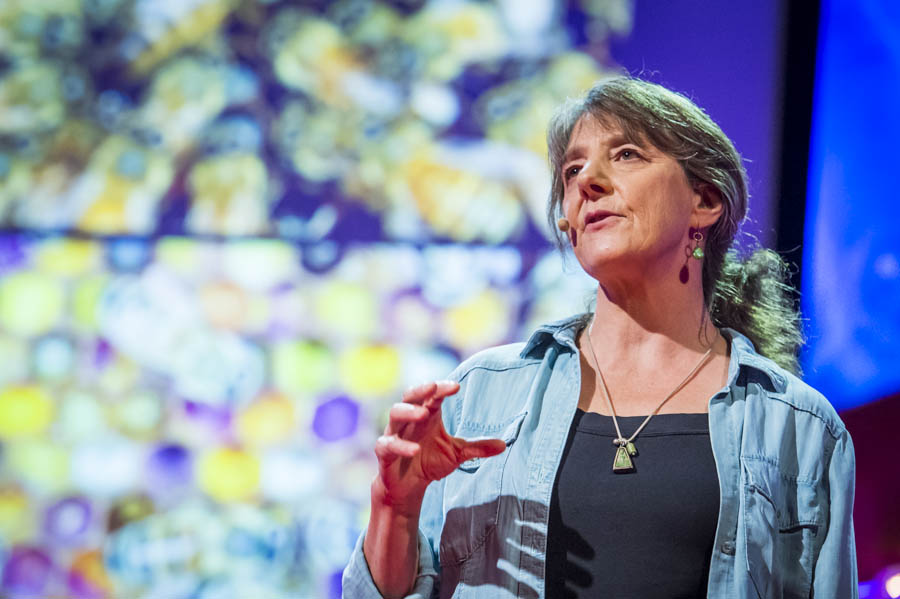Our supermarket produce aisles would look very, very bare without bees. As MacArthur Fellow Marla Spivak explains on the TEDGlobal stage, this is something we should all be extremely concerned about: the dramatic drop in bee populations that’s been taking place over the past seven years. (Read The New York Times’ take on the especially scary drop in just the last year.) In the United States alone, shares Spivak, while there were 4.5 million bess in 1945, thee are now about 2 million.
“Bees are not out there pollinating our food intentionally — they’re out there because they need to eat,” says Spivak. “In the process, they provide this valuable pollination service.”
There are 20,000 species of bees. One of the most famous is, of course, the bumblebee, which vibrates a flower as it eats nectar, releasing a pollen burst onto its body. When bumblebees aren’t available to do this work, people have to painstakingly hand-pollinate crops using a paintbrush or a tiny handheld vibrator (which is seriously called a “tomato tickler”). It’s a time-consuming, costly process and it’s probably what happened to the last hothouse tomato you bought.
Another popular bee is the honeybee, which Spivak calls the “charismatic representative” for the other bee species. A honeybee colony contains 40,000 to 50,0000 individuals, all communicating and making decisions. Honeybees even have social healthcare. They separate out sick individuals to keep the colony healthy, and they scrape propolis resins from flowers and use this natural antibiotic to seal the hive.
Bees have survived for over 50 million years. So something is very wrong when they are dying en masse. This is happening for four interrelated reasons, all related to changes in farming practices after World War II, says Spivak. While there’s been a 300% increase in production of crops that require bee pollination since WWII, we’ve started using much more synthetic fertilizer, and created crop monocultures, systematically eliminating the flowering plants that bees need for survival. At the same time, we’ve started using pesticides, and now every batch of pollen that a honeybee collects has at least six traces of pesticides in it — including neonicotinoids. These pesticides move through plant tissue; parasites take a bite and die. But neonicotinoids make bees intoxicated and disoriented, and in high enough concentration it can kill them.
“This small bee is holding up a large mirror — how much is it going to take to contaminate humans?” says Spivak. “I know what it feels like when I have the flu. I know how difficult it is for me to get to the grocery store to get good nutrition. But what if I lived in a food desert and had to travel a long distance to get to the store, and, when I got there, I got a neurotoxin that prevented me from finding my way home? This is what I mean by interrelated causes.”
But there is a solution, says Spivak. There are two things each and every one of us can do to help bee populations. We can plant bee-friendly flowers in our gardens and window boxes without pesticides. (Check online to see what grows best in your areas.) Also, we can all campaign to have a wide variety of flowers planted in community gardens and on roadsides, and to have flower borders planted around farms.
“We need to behave more like a bee society, where each of our small actions can contribute to a grand solution,” says Spivak. “Let planting flowers be the driver of large-scale change.”
Marla Spivak’s talk is now available for viewing. Watch it on TED.com »


Comments (24)
Pingback: Bees – An Essential Buzz for your Garden | Adopt-A-Garden
Pingback: Waarom de bijen verdwijnen – Marla Spivak - www.taxanders.be
Pingback: #814 Buzzing socialists who pollinate our food | This gives me hope
Pingback: Ants, Spiders, and Bees | My UNT Learning Technology Blog
Pingback: Why planting flowers might just save the world… | Coffee talk with Erin
Pingback: Life Without Bees is Rather Dull | Julie Green
Pingback: Life without bees is rather dull | 3things
Pingback: TED News in Brief: Remembering Elaine Morgan, the potential of a solar-powered plane, and more | Best Science News
Pingback: TED News in Brief: Remembering Elaine Morgan, the potential of a solar-powered plane, and more | BizBox B2B Social Site
Pingback: TED News in Brief: Remembering Elaine Morgan, the potential of a solar-powered plane, and more | Krantenkoppen Tech
Pingback: TEDGlobal – Inspiration overload! ‹ Alfa Bravo
Pingback: MN Rural Round-Up: July 2013 | Minnesota Rural Partners
Pingback: Interesting TED Lecture About the State of the Bees | My Easy BeeKeeping